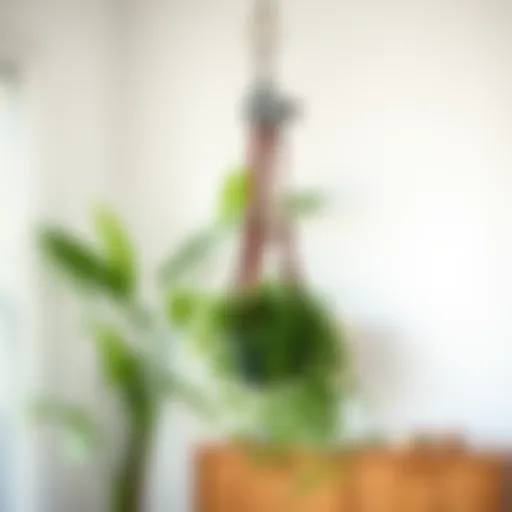Vintage Anchor Hocking Drinking Glasses: A Collector's Guide
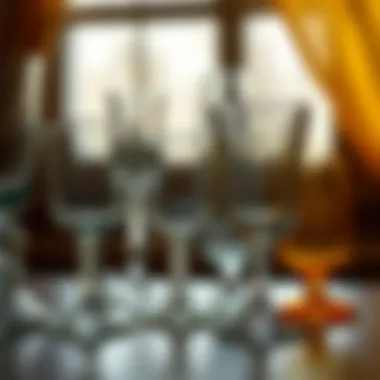
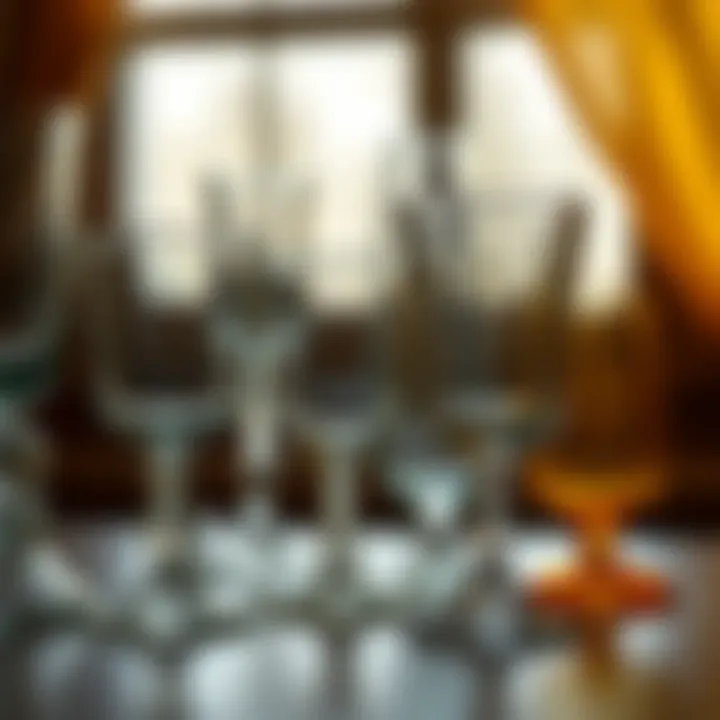
Intro
Anchor Hocking has long been synonymous with quality glassware, providing home essentials that blend functionality with aesthetic appeal. For those with an eye for vintage charm, Anchor Hocking drinking glasses offer not just a vessel for beverages, but a window into a rich tapestry of design, culture, and craftsmanship. From their initial production in the early 20th century to the diverse styles that emerged over the decades, these glasses tell stories of domestic life, trends, and gatherings.
This article aims to guide you through the fascinating layers of vintage Anchor Hocking drinking glasses, detailing their historical background, the evolution of their designs, and their place in modern décor. Whether you're a collector keen on unearthing hidden gems, or simply someone who appreciates remarkable craftsmanship, this piece serves as a thorough resource. Let's embark on this journey and understand why these timeless pieces hold such a special place in both homes and hearts.
Furniture Design Trends
As vintage Anchor Hocking drinking glasses find their way back into the limelight, they inevitably influence broad furniture design trends that cater to modern sensibilities while paying homage to the past. Amidst sleek lines and minimalist aesthetics that dominate contemporary design, the nostalgic appeal of vintage glassware integrates seamlessly, creating a conversation between eras.
Current Styles and Aesthetics
When discussing current styles, vintage glassware often emerges as a standout feature in eclectic and cottage-style homes. Designers today leverage elements of vintage aesthetics to attract a sense of warmth and character. Warm-toned wood, mid-century inspired furniture, and soft textiles pair beautifully with the spirited colors and intricate patterns found in Anchor Hocking glasses. Using them as a centerpiece—right from the classic moonstone to the whimsical patterns—adds an extraordinary touch.
- Eclectic Styles: A mix of old and new can be compelling. Vintage glasses beside modern plates or under glass cloches exhibit a harmonious blend of different eras.
- Cottage Aesthetic: The soft charm of vintage Anchor Hocking drinking glasses matches perfectly with overstuffed chairs, floral prints, and distressed finishes.
Color Palettes and Materials
Color plays an essential role when showcasing these vintage pieces. Anchor Hocking produced glasses in various hues like cobalt blue, amber, and ruby red, all of which serve as ideal accents to neutral palettes found in modern design. Pairing these colorful glasses with understated dining sets can create striking contrasts.
Materials also matter. Mixing glass with wood, ceramics, and metals creates dynamic visual interest, as these materials complement each other while highlighting the retro feel.
"Integrating vintage glassware into contemporary spaces creates an alluring dialogue between the past and the present, enriching the experience of everyday living."
Buying Guides
For those looking to dive deeper into the world of vintage Anchor Hocking drinking glasses, navigating purchases can be a rewarding yet challenging experience. Unique designs and collectible editions abound, and knowing what to look for can make a significant difference.
Essential Considerations When Purchasing
Before snapping up a piece, consider the following key points:
- Authenticity: Make sure to investigate the manufacturer stamp. Older pieces often have distinct markings.
- Condition: Look for any chips, cracks, or signs of wear. While some elements add character, ensure they don’t compromise functionality.
- Design Variation: Familiarize yourself with different lines or series. Some designs, like the Bubble and Fire-King, are more sought after.
Top Recommendations for Different Budgets
When it comes to collecting, Anchor Hocking glasses are available at a range of prices, catering to every budget:
- Under $50: Basic sets or unique pieces found in thrift stores can provide great value.
- $50 to $150: Unique or rarer designs may be found online or at vintage markets.
- $150 or more: Limited editions or excellent-quality pieces might command higher prices, particularly from reputable dealers.
Venture out to websites like Etsy, or visit forums on Reddit for community discussions on collectibles.
Maintaining these glass pieces is not complicated, but understanding how to care for them properly will certainly preserve their value and appearance.
Keep them in a dry place away from direct sunlight, and when cleaning, opt for gentle handwashing with mild soap rather than the dishwasher.
Vintage Anchor Hocking drinking glasses are not just functional objects; they are storytelling vessels linking past and present. As you continue this exploration, you’ll discover that the artistry and nostalgia of these glasses can enliven any modern home.
Prelude to Vintage Anchor Hocking
When one thinks of vintage glassware, Anchor Hocking stands out as a symbol of craftsmanship and nostalgia. This introduction lays the groundwork for understanding the importance of these unique drinking glasses, which are not just utilitarian items but also pieces of history. Their value extends beyond their physical form; they carry stories of craftsmanship, societal trends, and personal memories that make them significant in both domestic and design settings.
The Legacy of Anchor Hocking
Founded in 1905, Anchor Hocking has etched its name into the annals of American glass manufacturing. The company began in a small factory in Lancaster, Ohio, producing glassware that aimed to bring beauty and utility into people’s homes. Over the decades, their innovations, like the Fire-King line, have resonated with collectors and homemakers alike. Each piece from the Anchor Hocking collection, especially those that are vintage, is a window into the past, often reflecting the aesthetics and quality that were highly valued in their time.
The legacy of Anchor Hocking is not merely about the products they made; it's about how they shaped an industry. Their designs have influenced style trends over generations, with many patterns becoming quintessential representations of mid-20th-century American households.
Understanding Vintage Glassware
Vintage glassware, particularly from Anchor Hocking, invites a deeper conversation about quality and history. This segment of the article focuses on what makes these drinking glasses stand out amidst a crowded market. Vintage glassware is defined as pieces that were manufactured at least 20 years ago, and Anchor Hocking’s offerings fit snugly within these parameters.
The charm of vintage glassware lies in its individuality. Each piece might tell a story, such as a family gathering where the glasses were used or a milestone celebration. Collectors and enthusiasts often find themselves drawn not only to the aesthetic appeal but also to the thrill of hunting down rare finds. To truly appreciate vintage Anchor Hocking, one must look beyond its surface and see how each glass carries a narrative of craftsmanship, trends, and personal meaning.
In this exploration, we look forward to delving into the historical context, design evolution, and collecting tips that will enhance your understanding and appreciation of these treasured artifacts.
Historical Context
The historical context surrounding vintage Anchor Hocking drinking glasses is pivotal for understanding their significance not only as collectibles but also as visual artifacts of American culture. These glasses encapsulate a time when daily life intertwined seamlessly with craftsmanship, elevating simple drinking vessels into cherished items. Knowing the narrative that underpins these vintage gems offers collectors and design enthusiasts a broader insight into their value, aesthetic trends, and the shifting norms of consumer preferences.
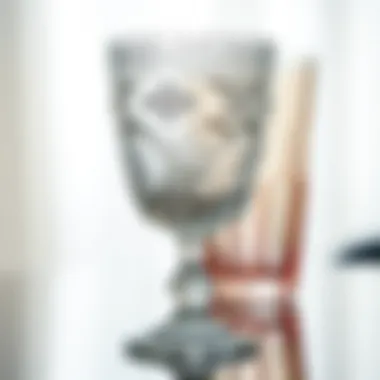
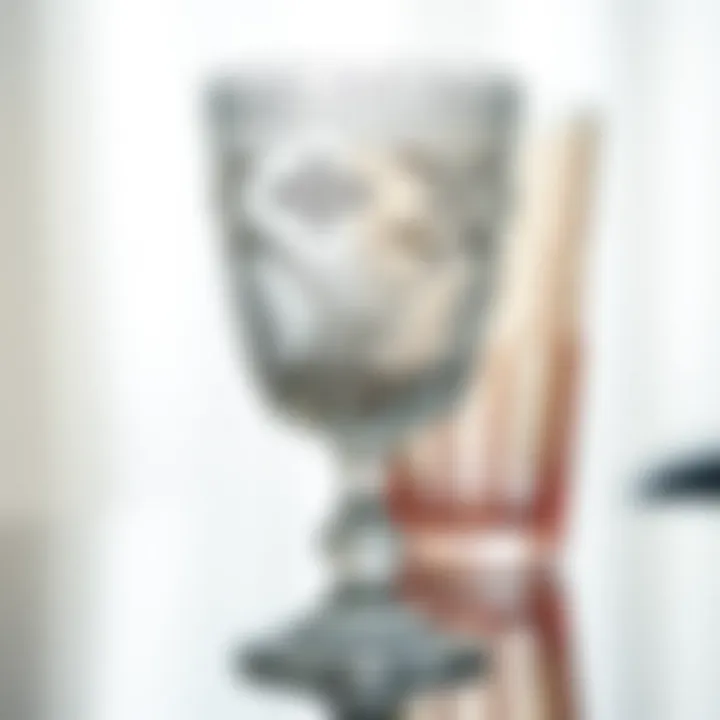
Anchor Hocking's Founding
Anchor Hocking Glass Corporation was founded in 1905 in Lancaster, Ohio, during an era where glass manufacturing was booming across the United States. It didn’t take long for the company to figure prominently in the American household. At first, the focus was on producing glass containers, but by embracing a philosophy of quality and innovation, Anchor Hocking began crafting decorative as well as functional products. The brand quickly emerged, forging its identity through unique designs and robust materials.
Understanding this foundational history is essential for appreciating the vintage pieces today. Variants from the early to mid-20th century often highlight the company's commitment to both functionality and artistic merit. Glasses from this era are not mere tableware; they reflect a society that valued both practicality and style in everyday items.
Many collectors find interest not just in the glass itself, but in the stories behind its creation. These artifacts are a snapshot of an evolving culture where households strived to balance affluence, tradition, and modernity.
Cultural Trends in Glassware
The evolution of drinking glasses from Anchor Hocking also shines a light on broader cultural trends in glassware during the 20th century. Following World War II, there was a sentiment of prosperity and nostalgia that echoed through the designs of the era. Items such as the Fire-King series spoke to consumers who wanted both functional and visually appealing items in their homes.
In the 1950s and 1960s, social gatherings became more commonplace, prompting manufacturers like Anchor Hocking to create durable and attractive glassware suitable for entertaining. This led to a slew of designs that embraced vibrant colors, imaginative patterns, and more practical dimensions. These changes reflected a shift in societal values, where leisure and hospitality became paramount and influenced people’s choices in home décor.
"As households modernized, so too did their preferences for glassware, making pieces from this period highly sought after today."
Understanding these cultural influences helps collectors and designers appreciate vintage Anchor Hocking glassware as more than just relics; they are an embodiment of historical moments and trends that shaped the American experience. In essence, each glass is a tiny time capsule, whispering tales of the past that lend character to modern settings while offering a rich layer of historical insight.
Design Evolution
The design evolution of Anchor Hocking glasses is not just about aesthetics; it’s a reflection of changing tastes, technologies, and cultural values over the decades. This transformation weaves a rich story that speaks to collectors and enthusiasts alike. From the 1930s to the present, each era brought its own fingerprint to the styles and patterns that make these glasses so desirable today.
Understanding this aspect is crucial for anyone looking to appreciate the full lineage of these vintage pieces. Classic designs feature iconic elements that evoke nostalgia and eloquence while keeping practical usability at their core. By delving into the design evolution, we can grasp the underlying artistry and intent behind various styles, allowing us to better curate and decorate with these beloved items.
Iconic Patterns and Styles
When discussing iconic patterns and styles of Anchor Hocking, one cannot overlook the striking individuality of each collection. The Cameo pattern stands out for its delicate floral engravings, often bringing to mind garden parties and elegant dinners of the 1950s. Meanwhile, the Star of David pattern presents geometric sharpness, making it a favorite for those who appreciate a modern touch in their vintage finds.
A few additional noteworthy patterns include:
- Fire-King: Known for its toughness, these pieces come in various pastel shades, embodying simplicity blended with durability.
- Milk Glass: This opaque glass not only looks beautiful but also provides excellent versatility in any home setting.
- Roly Poly: A whimsical design that many associate with festive occasions, bringing a sense of playfulness.
These patterns do not just exist in isolation; they resonate with the cultural zeitgeist of the times. Collectors often find joy not only in the beauty of these styles but also in the stories they share about different eras.
Color Variations Over Time
Color has been a defining element in the evolution of Anchor Hocking's design. From the early clear glass of the 1930s, the brand began to experiment with colors, catering to the increasing demand for more vibrant options that complemented the evolving home décor kitsch of the mid-20th century. The introduction of pastel hues such as pale blue, pink, and yellow added a cheerful twist, appealing to the vibrant spirit of the 1950s.
As we progressed into the 1970s, earth tones became increasingly popular, reflecting a shift toward a more natural aesthetic that many find reminiscent of the hippie counterculture. The deep amber and olive green shades not only mirrored contemporary trends but also offered a look that could enhance rustic and modern styling alike.
It’s important to note that color plays an essential role in the valuation of these vintage pieces. A chalice from the Fire-King line in jadeite green, for instance, can fetch a significant price when sold due to the rarity and demand among collectors.
As time goes on, the balance between design and color continues to intrigue collectors. Whether it's the robust lines of an industrial design or the soft hues of classic vintage glassware, these evolving choices make Anchor Hocking a significant player in the conversation of glass craftsmanship.
“Design is not just how it looks; design is how it works.” - Steve Jobs
By acknowledging the intricate relationship between iconic patterns, styles, and color variations, homeowners and designers can effectively integrate these beautiful pieces into their personal collections and modern settings.
Notable Collections and Series
When it comes to vintage Anchor Hocking glassware, certain collections stand out for their unique designs and historical significance. Exploring the notable collections not only gives collectors insight into the styles that define the era but also helps to appreciate the craftsmanship and cultural impact of these pieces.
The Fire-King Line
The Fire-King line, introduced in the 1940s, is perhaps one of the most recognizable series produced by Anchor Hocking. This collection is notable for its durable, oven-safe glassware that quickly gained popularity in American households. Its charm lies in versatile designs such as the cottage cheese bowls, the highly sought-after jadeite, and a spectrum of vibrant colors ranging from pastel to bold.
The significance of Fire-King goes beyond just aesthetic appeal. During a time when families were transitioning to post-war living and entertaining, this glassware offered both practicality and style. It's worth mentioning that collectors often seek specific patterns within this line, like the Daisy and Button, which showcases intricate detailing.
"Collecting Fire-King glassware is akin to holding a piece of American history in your hands," says renowned glassware expert, Linda Johnson.
Some benefits of collecting Fire-King include its durability, making it more forgiving than other glass types in terms of maintenance. Enthusiasts may also appreciate the investment potential—certain pieces can fetch high prices at auctions, reflecting their scarcity and desirability. For those on the hunt, it’s important to familiarize oneself with distinguishing features, like the maker's mark, which can often indicate a piece's authenticity.
Presidential and Promotional Glasses
Anchor Hocking also produced a series known as Presidential and Promotional Glasses that resonated with consumers due to their unique commemorative value. The concept behind these pieces often revolved around partnerships with various brands, events, or famous personalities, which could capture a moment in time.
These promotional glasses were frequently tied to significant events, such as the 1960 presidential campaign or sponsorships with popular radio shows of the era. Each glass typically featured vibrant graphics and slogans that encapsulated the spirit of the time. Collectors often seek these for their rich history and unique storytelling aspects.
Features of these glasses can include:
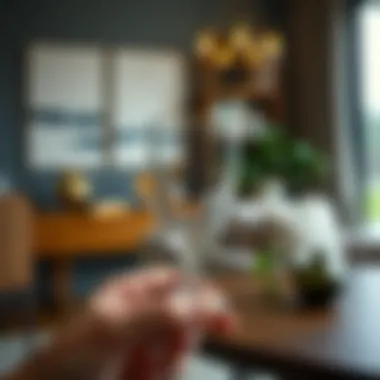
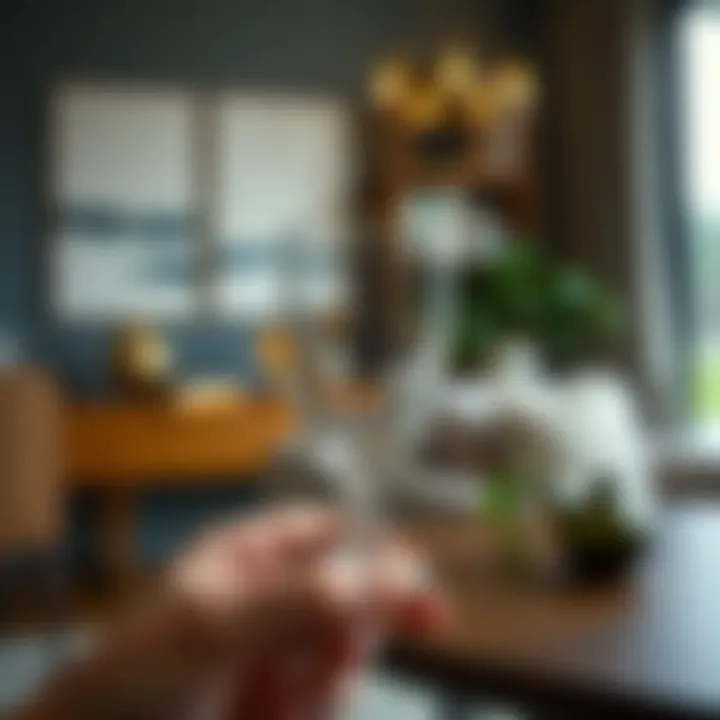
- Exacting designs: Many promotional pieces will depict logos or slogans, making them a perfect snapshot of cultural zeitgeist.
- Limited production runs: Some of these items were created for a specific event, which added to their rarity and makes collecting them more exciting.
- Value appreciation: Like many collectibles, the market value can appreciate significantly, especially if the pieces remain in good condition.
For those considering entering the world of these collectibles, it’s essential to verify the provenance and authenticity of each piece. No one wants to get burned on a replica!
Material and Craftsmanship
When it comes to vintage Anchor Hocking drinking glasses, the material and craftsmanship are critical components that define their quality and appeal. These glasses are not just simple vessels for beverages; they carry a rich heritage, embodying the intricate artistry and durable materials that have characterized Anchor Hocking's legacy for decades. By understanding both of these elements, collectors and admirers can truly appreciate the value and history behind each piece.
Understanding Glass Composition
The glass composition plays a pivotal role in determining not only the aesthetic appearance but also the durability of these vintage drinking glasses. Anchor Hocking primarily used soda-lime glass, a popular choice in glass production because of its balance between form and function. Soda-lime glass is quite robust, making it resistant to chipping and scratching, which is a considerable benefit for items intended for daily use.
- Soda-Lime Glass: This type of glass is formed from silica, soda, and lime, creating a product that is both appealing and tough. The transparency allows colors and patterns to shine, particularly in pieces decorated with vibrant hues and distinctive motifs.
- Caloric Resistance: This glass type also exhibits some thermal resistance but should still be handled cautiously with rapid temperature changes. Therefore, knowing when to serve that hot cup of coffee or chilled lemonade can protect your cherished glasses from unnecessary stress.
The craftsmanship of Anchor Hocking drinking glasses deserves equal recognition. The molds and forming processes used in their creation were designed to ensure that no two pieces were precisely alike, thus introducing a character to each glass. They often incorporated techniques like hand-painting and etching, each step adding layers of detail and uniqueness.
The Importance of Quality Control
Quality control is an underlying principle that Anchor Hocking has adhered to throughout its history. Each step in the production process, from selecting raw materials to the final inspection of the glass, has been meticulously handled to ensure premium quality.
- Material Selection: Only the finest raw materials are sourced. This ensures that flaws are minimized in the final product, ultimately enhancing their market value.
- Production Oversight: During manufacturing, skilled artisans oversee each aspect to catch errors before they escalate. This attention to detail is what sets vintage Anchor Hocking glasses apart from lesser-quality products.
- Final Checks: Before these glasses reach the shelves, they undergo rigorous inspection for imperfections such as bubbles or cracks. This step is crucial as it upholds the brand's reputation for excellence, ensuring that only the best pieces are available for consumers.
"Great craftsmanship doesn’t just happen; it is a result of passionate artisans dedicating their skills to produce timeless pieces that honor tradition and innovation alike."
In summary, understanding the material and craftsmanship behind vintage Anchor Hocking drinking glasses is indispensable for collectors and enthusiasts alike. These aspects not only contribute to the glasses' visual appeal but also to their functional longevity, ensuring that they remain a cherished part of many households and a staple in glassware collections. By appreciating their origins, collectors can develop a deeper connection to their glassware, safeguarding its legacy for future generations.
Collecting Vintage Anchor Hocking Glasses
Collecting vintage Anchor Hocking glasses is not merely a hobby; it’s an opportunity to tap into a rich history and appreciate the artistry behind each piece. This collectible glassware, which has graced numerous dining tables since the 1900s, offers a unique blend of nostalgia, craftsmanship, and investment potential. For enthusiasts and collectors alike, understanding the nuances of these glasses enhances not only their value but also their connection to the past.
The significance of collecting these glasses transcends the aesthetic appeal. Firstly, each piece tells a story—from the patterns that reflect the changing cultural landscape to the materials that showcase the technological advancements of glassmaking. Delving into the collection journey is akin to being a curator of a personal museum, where each item signifies a pivotal moment in American history.
Further, vintage glassware, particularly from Anchor Hocking, has shown tendencies in the market to appreciate in value over time. Collecting these can be a smart financial investment when approached with knowledge and patience. Many collectors have seen their carefully chosen pieces not only maintain but increase in worth, adding a level of satisfaction to their collecting experience.
Benefits of Collecting
- Cultural Appreciation: Each glass embodies a portion of history.
- Aesthetic Enjoyment: The variety in designs allows collectors to curate a set that reflects their personal style.
- Investment Potential: The value of these glasses can appreciate over time, making them a wise investment.
- Social Connection: Collecting can connect individuals with a community of fellow enthusiasts who share similar passions.
Ultimately, the journey of collecting vintage Anchor Hocking glasses is about more than just acquiring items; it's about building connections to history, culture, and community, all while putting together a curated collection that will be cherished for generations.
Identifying Authentic Pieces
To enjoy the art of collecting, one must first know how to identify genuine Anchor Hocking glasses. The vintage market is populated with reproductions and fakes, making it vital for collectors to be well-informed. Here are some key points to consider:
- Labeling and Stamps: Authentic pieces often have the Anchor Hocking logo or stamp. Familiarize yourself with the different markings through various decades.
- Quality of Craftsmanship: Real Anchor Hocking glass has a certain heft to it, with smooth edges and precise detailing. A flimsy feel or sharp edges can be a red flag.
- Color and Clarity: Observe the color consistency and clarity of the glass. Variations can signify authenticity, especially in older pieces.
- Patterns: Many vintage glasses have unique, identifiable patterns. Knowing these can differentiate real items from knock-offs. Consult resources like Wikipedia for pattern references.
Recognizing these traits can prevent collectors from falling into deceptive traps and ensure that every piece in their collection is authentic.
Where to Find Vintage Glassware
The array of places to scout for vintage Anchor Hocking glassware is as diverse as the pieces themselves. Here’s where collectors can get a head start:
- Thrift Stores and Charity Shops: Often overlooked, these venues can yield hidden treasures. It's often a hit or miss, but the thrill of the hunt is part of the excitement.
- Flea Markets and Estate Sales: These locales usually feature a mix of collectibles, often at lower prices than online marketplaces. Digging through boxes yields surprises.
- Online Marketplaces: Websites like eBay or Etsy are gold mines for collectors. Here, users can find sellers with specialized collections, but keep an eye on seller reviews to ensure trustworthiness.
- Social Media Groups: Platforms like Facebook have dedicated groups where members buy, sell, and trade pieces. Joining a community can provide access to rare finds and advice from seasoned collectors.
- Local Antique Shops: Instead of hunting electronically, sometimes it's better to visit physical stores. Many antique shop owners are knowledgeable and can provide history behind everyday pieces.
- Collector Conventions: These events can be both educational and entertaining, offering access to sellers who might have very rare pieces. Plus, connecting with other enthusiasts can lead to fruitful exchanges or friendships.
Finding vintage glassware is about being proactive and open to exploring various avenues. The perfect piece is often lurking in the most unexpected places.
Market Trends and Valuation
When it comes to vintage Anchor Hocking drinking glasses, understanding market trends and valuation is essential for both collectors and enthusiasts. These aspects provide insight into the current state of the market, helping individuals make informed decisions about buying, selling, or simply appraising these cherished items. A clear grasp of market trends not only reveals the fluctuations in demand but also reflects the cultural significance of glassware in today's society.
Assessing Market Value
Determining the market value of vintage Anchor Hocking glasses involves several factors. First and foremost, condition plays a critical role. A glass in pristine condition, free from chips, scratches, or clouding, commands a higher price. Additionally, rarity is a significant aspect; some models are produced in fewer quantities, making them more sought after.
Another factor to consider is the pattern and color. For example, glasses from the Fire-King line, known for their robust color options, often fetch higher prices compared to standard clear models. Similarly, special editions or promotional glasses that commemorate events or brands can dramatically raise the market value.
When assessing value, it's necessary to compare similar items already on the market. Online platforms and auction sites provide invaluable resources where collectors can gauge selling prices. Moreover, maintaining up-to-date knowledge of the vintage glass market through resources, forums, or collector groups can be beneficial.
Popular Avenues for Sale
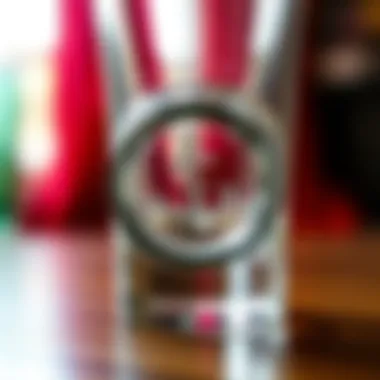
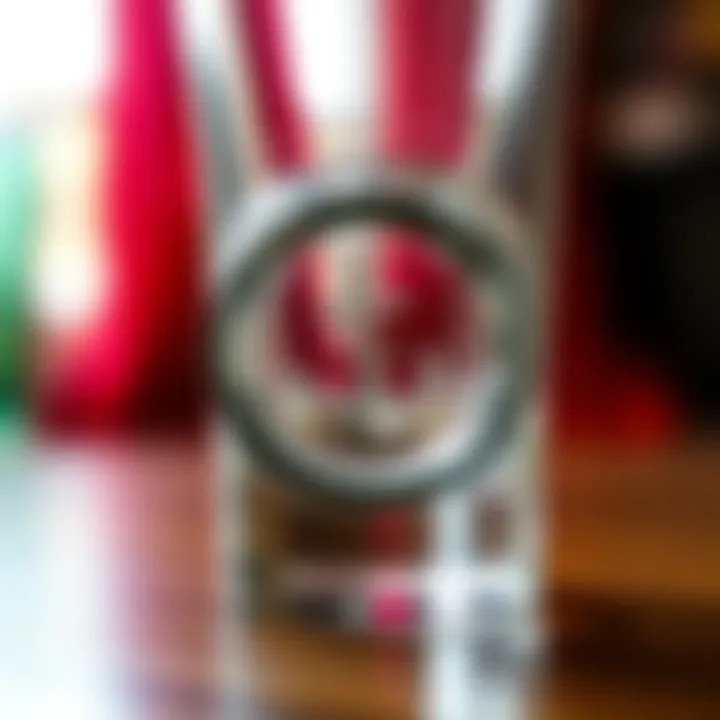
Finding the right platform to buy or sell vintage Anchor Hocking glasses is vital for achieving the best possible transaction. Here are some popular avenues:
- Online Marketplaces: Websites like eBay and Etsy are treasure troves of vintage glassware, offering a vast array of choices and price points. They provide great platforms for both buyers and sellers.
- Antique Shops: Visiting local antique stores can yield fascinating finds. Many curators are knowledgeable about their inventory and can provide provenance or background on the pieces.
- Estate Sales and Auctions: These events can be excellent opportunities for collectors to score rare items at reasonable prices, especially when sellers might not entirely recognize the value of vintage glassware.
- Glass Shows and Fairs: Attending specialized shows not only allows collectors to directly purchase from dealers but also fosters networking and learning from other enthusiasts.
"Understanding the market trends in vintage glassware not only helps in making educated purchases but also enriches the collecting experience."
Ultimately, whether one is a seasoned collector or a newcomer, grasping the dynamics of market trends and valuation is key to enhancing the appreciation of vintage Anchor Hocking glasses. Keeping an eye on these factors ensures that collectors are not just gathering glassware, but also participating in a vibrant historical narrative.
Care and Maintenance
Caring for vintage Anchor Hocking drinking glasses is not just about keeping them clean; it’s about preserving the history and craftsmanship that defines these cherished pieces. A thorough understanding of how to maintain their integrity can dramatically affect both their usability and their market value. This section dives into essential cleaning techniques and safe storage practices, ensuring your vintage glasses retain their timeless elegance for years to come.
Cleaning Techniques for Glassware
When it comes to cleaning vintage Anchor Hocking glasses, gentleness is key. These glasses, while sturdy, have gone through decades of wear and tear. Here are some effective cleaning techniques to consider:
- Hand Washing: Always opt for hand washing over a dishwasher. Use a soft sponge or cloth to avoid scratches.
- Soapy Water: Prepare a mixture of mild dish soap and warm water. Immerse the glassware and gently scrub the surfaces.
- Avoid Abrasives: Steer clear of scouring pads or harsh chemicals, as these can damage the glass and erase the brilliant shine.
- Spot Treatment: For stubborn stains, create a paste with baking soda and water. Apply it gently and rinse thoroughly.
The importance of thorough cleaning lies not only in aesthetics but also in hygiene. Vintage glasses can hold onto residues from previous usage, impacting future drinks. After all, who wants a hint of residue in their morning orange juice?
Storing Your Collection Safely
Proper storage can prolong the life of your vintage glassware significantly. Here are some practical storage tips:
- Use Soft Liners: Always line the shelves or cabinet with a soft fabric or shelf liner to cushon against scratches.
- Avoid Stacking: If possible, store glasses upright and avoid stacking them directly on top of each other to reduce the risk of chips and cracks.
- Climate Consideration: Keep them in a stable environment, away from extreme temperatures or humidity to prevent any thermal shock that could lead to breakage.
- Display Cases: If you wish to showcase your collection, consider a display case that protects glassware from dust while allowing everyone to admire it.
“A small investment in proper care and storage pays off in years of enjoyment and enhanced value when it comes to vintage glassware.”
Adhering to these care and maintenance practices will not only help you enjoy your vintage Anchor Hocking drinking glasses but also elevate their presence in any room. As they say, a stitch in time saves nine; thus, a little effort today could keep those vintage beauties shining brightly tomorrow.
Aesthetic Integration in Modern écor
Integrating vintage Anchor Hocking drinking glasses into modern decor is not just about nostalgia; it's about creating a conversation between the past and present. These glassware pieces serve as functional art, and when placed thoughtfully within contemporary environments, they can elevate the aesthetic and add a layer of charm that newer items might lack.
Using Vintage Glass in Contemporary Settings
The appeal of vintage Anchor Hocking glasses lies in their unique ability to evoke memories while fitting seamlessly into various design themes. To use these glasses in a modern setting, consider the following points:
- Versatility: Their classic patterns and colors can complement various color palettes and furniture styles. For instance, a simple clear Glass with a subtle etching can enhance a sleek, minimalist dining table without overpowering it.
- Functional Decor: These glasses aren’t just for sipping beverages; they can serve as vases for small flowers or even holders for candles. This multifunctionality can be particularly appealing in smaller spaces.
- Statement Pieces: A collection of bold, colorful glasses can become a striking centerpiece, perhaps organized on a floating shelf or a curio cabinet. As the light hits them just right, the colors dance and sparkle, creating visual interest that draws the eye.
When placing vintage glasses in modern decor, don’t shy away from mixing materials. Pair them with metal, wood, or even concrete elements to create an eye-catching contrast.
Creating a Cohesive Design Scheme
Cohesion in design is key to making any space feel curated rather than cluttered. Integrating vintage glassware into a modern decor scheme requires thoughtful planning:
- Color Coordination: Choose glasses that either match or harmonize with the color scheme of your room. If you have a predominantly neutral space, even a few vibrant glass pieces can pop and draw attention without overwhelming the palette.
- Theme Consideration: Whether your style is rustic modern, industrial chic, or coastal, anchor Hocking pieces can support your theme. For seaside homes, consider pairing their lighter, frosted glasses with driftwood elements to enhance that beachy feel.
- Layering Textures: Combine vintage glass with other materials like wood, fabrics, and metals to create a rich texture palette. This layering adds depth to your decor and helps each element stand out, including your vintage pieces.
"Vintage glassware not only tells a story; it becomes an integral part of modern storytelling in design."
When selecting the placement of these glasses, think of balance. A well-placed vintage glass can draw the eye and provide an anchor point in the overall design scheme, ensuring that it feels intentional and grounded.
By thoughtfully integrating vintage Anchor Hocking drinking glasses into contemporary settings and maintaining a cohesive design scheme, homeowners and designers can achieve a beautiful blend of history and modernity.
Finale
When reflecting on vintage Anchor Hocking drinking glasses, it becomes evident that these remarkable pieces are not merely functional items but also treasures steeped in history and cultural significance. They echo the craftsmanship of a bygone era, offering a glimpse into the past while still enriching modern lifestyles.
Reflecting on the Value of Vintage Glassware
Vintage glassware carries an intrinsic value that transcends mere monetary worth. For collectors, it represents stories—the legacy of a family, a particular moment in time, or the evolution of design trends. Anchor Hocking glasses exemplify this narrative, providing a connection to the aesthetics of mid-20th century America. Their beauty is not just skin deep; it's an expression of artistry and functionality combined. As such, they preserve memories and elicit emotions tied to gatherings, celebrations, and day-to-day life.
Moreover, the act of collecting such items fosters community among enthusiasts. Those dedicated to this hobby often engage in discussions about rarity and craftsmanship, share tips on care, and swap insights about market trends. This sense of belonging can be quite fulfilling, particularly for homeowners and designers who appreciate blending nostalgic elements with contemporary décor.
In essence, valuing vintage glassware like that of Anchor Hocking is not solely about possession; it's a celebration of artistry and history that ingrains itself into the fabric of our lives.
Future of Anchor Hocking Collectibles
Looking ahead, the future of Anchor Hocking collectibles appears promising. As interest in sustainable living rises, many individuals are turning to vintage items and away from mass-produced goods. This shift enhances the appeal of collecting Anchor Hocking glassware, which is durable and timeless. With the prospect of such items being reused and cherished rather than discarded, collectors might find themselves in a pivotal position, advocating for sustainable choices.
Additionally, the digital marketplace has opened new doors for collectors. Online platforms, such as Facebook and Reddit, have burgeoning communities where enthusiasts can buy, sell, or trade these exquisite pieces. This accessibility might stimulate demand, encouraging younger generations to appreciate and curate collections of their own.
"Collecting is not just about owning things; it's about gathering stories, preserving history, and cherishing the artistry that connects us all."
For further insights into vintage glassware trends, you may explore resources like Wikipedia, Britannica or groups on Reddit and Facebook.













